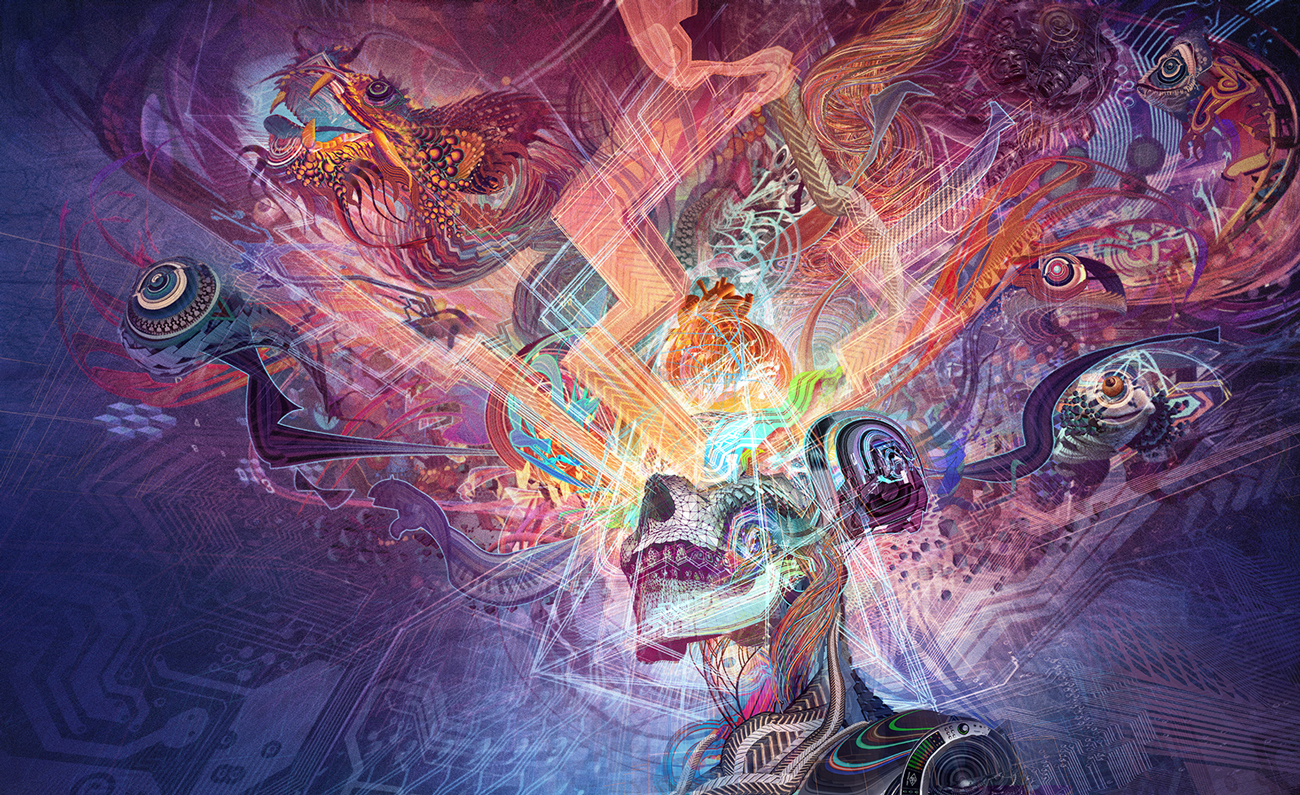Psychography, or the direct writing of messages by spirits, partakes of both forms of mediumship. The writing itself is an objective physical fact, while the sentiments it contains may be of the very noblest character. The latter depend entirely on the moral state of the medium. It does not require that he should be educated, to write philosophical treatises worthy of Aristotle, nor a poet, to write verses that would reflect honor upon a Byron or a Lamartine; but it does require that the soul of the medium shall be pure enough to serve as a channel for spirits who are capable of giving utterance to such lofty sentiments.
Page 368
In Art-Magic, one of the most delightful pictures presented to us is that of an innocent little child-medium, in whose presence, during the past three years, four volumes of MSS., in the ancient Sanscrit, have been written by the spirits, without pens, pencils, or ink. “It is enough,” says the author, “to lay the blank sheets on a tripod, carefully screened from the direct rays of light, but still dimly visible to the eyes of attentive observers. The child sits on the ground and lays her head on the tripod, embracing its supports with her little arms. In this attitude she most commonly sleeps for an hour, during which time the sheets lying on the tripod are filled up with exquisitely formed characters in the ancient Sanscrit.” This is so remarkable an instance of psychographic mediumship, and so thoroughly illustrates the principle we have above stated, that we cannot refrain from quoting a few lines from one of the Sanscrit writings, the more so as it embodies that portion of the Hermetic philosophy relating to the antecedent state of man, which elsewhere we have less satisfactorily described.
“Man lives on many earths before he reaches this. Myriads of worlds swarm in space where the soul in rudimental states performs its pilgrimages, ere he reaches the large and shining planet named the Earth, the glorious function of which is to confer self-consciousness. At this point only is he man; at every other stage of his vast, wild journey he is but an embryonic being — a fleeting, temporary shape of matter — a creature in which a part, but only a part, of the high, imprisoned soul shines forth; a rudimental shape, with rudimental functions, ever living, dying, sustaining a flitting spiritual existence as rudimental as the material shape from whence it emerged; a butterfly, springing up from the chrysalitic shell, but ever, as it onward rushes, in new births, new deaths, new incarnations, anon to die and live again, but still stretch upward, still strive onward, still rush on the giddy, dreadful, toilsome, rugged path, until it awakens once more — once more to live and be a material shape, a thing of dust, a creature of flesh and blood, but now — a man.”
We witnessed once in India a trial of psychical skill between a holy gossein and a sorcerer, which recurs to us in this connection. We had been discussing the relative powers of the fakir’s Pitris, — pre-Adamite spirits, and the juggler’s invisible allies. A trial of skill was agreed upon, and the writer was chosen as a referee. We were taking our noon-day rest, beside a small lake in Northern India. Upon the surface of the glassy water floated innumerable aquatic flowers, and large shining leaves. Each of the contestants plucked a leaf. The fakir, laying his against his breast, folded his hands across it, and fell into a mo-
Page 369
mentary trance. He then laid the leaf, with its surface downward, upon the water. The juggler pretended to control the “water-master,” the spirit dwelling in the water; and boasted that he would compel the power to prevent the Pitris from manifesting any phenomena upon the fakir’s leaf in their element. He took his own leaf and tossed it upon the water, after going through a form of barbarous incantation. It at once exhibited a violent agitation, while the other leaf remained perfectly motionless. After the lapse of a few seconds, both leaves were recovered. Upon that of the fakir were found — much to the indignation of the juggler — something that looked like a symmetrical design traced in milk-white characters, as though the juices of the plant had been used as a corrosive writing fluid. When it became dry, and an opportunity was afforded to examine the lines with care, it proved to be a series of exquisitely-formed Sanscrit characters; the whole composed a sentence embodying a high moral precept. The fakir, let us add, could neither read nor write. Upon the juggler’s leaf, instead of writing, was found the tracing of a most hideous, impish face. Each leaf, therefore, bore an impression or allegorical reflection of the character of the contestant, and indicated the quality of spiritual beings with which he was surrounded. But, with deep regret, we must once more leave India, with its blue sky and mysterious past, its religious devotees and its weird sorcerers, and on the enchanted carpet of the historian, transport ourselves back to the musty atmosphere of the French Academy.

Moe is the founder of GnosticWarrior.com. He is a father, husband, author, martial arts black belt, and an expert in Gnosticism, the occult, and esotericism.





![How the same holy man gave sight to the blind daughter of a tribune, and then coming to St. Alban, there received of his relics, and left other relics of the blessed Apostles and other martyrs [429 A.D.] | Book 1 | Chapter 17 How the same holy man gave sight to the blind daughter of a tribune, and then coming to St. Alban, there received of his relics, and left other relics of the blessed Apostles and other martyrs [429 A.D.] | Book 1 | Chapter 17](https://www.gnosticwarrior.com/wp-content/plugins/contextual-related-posts/default.png)